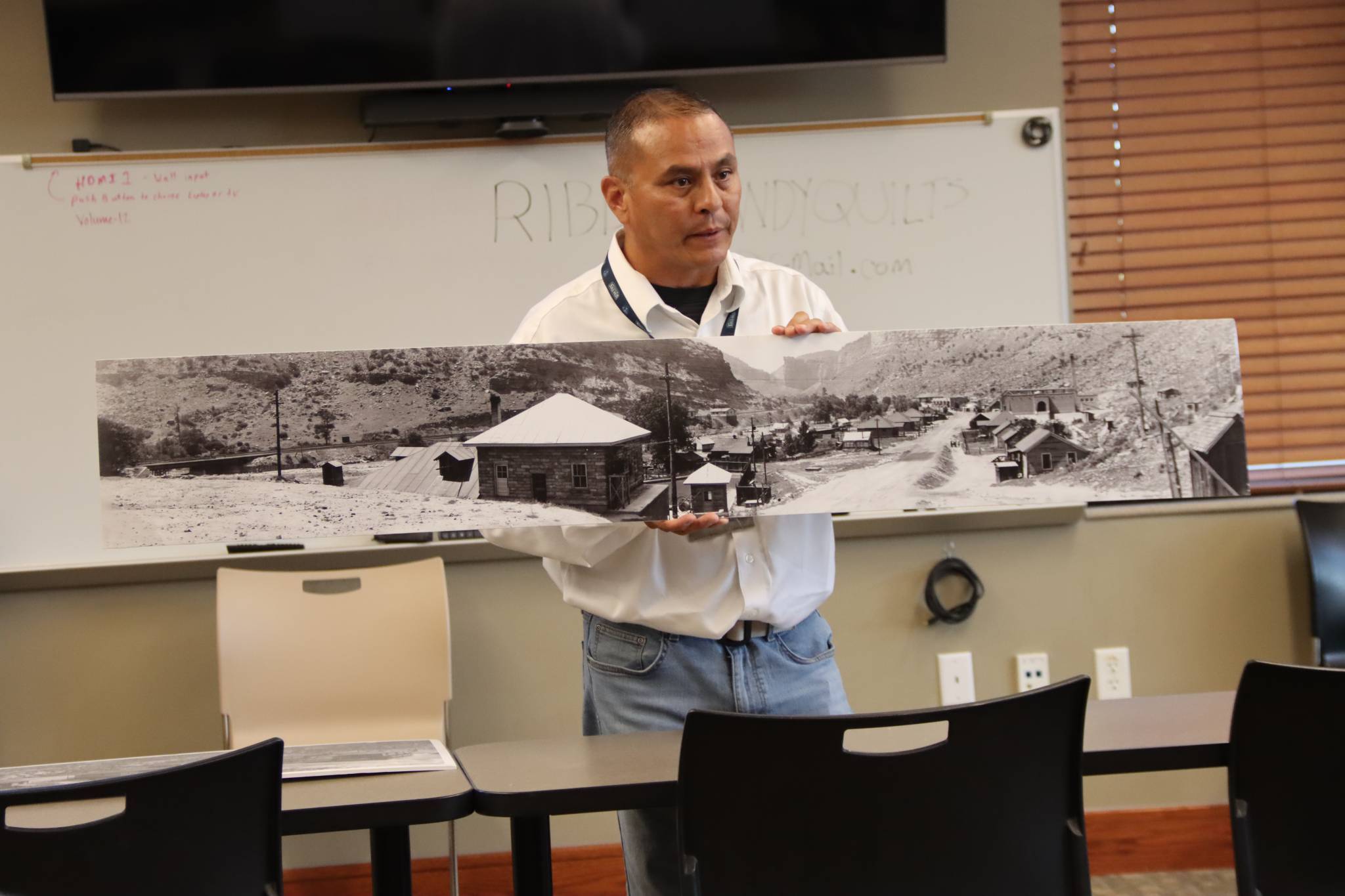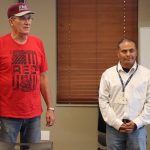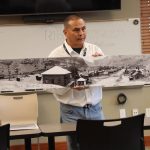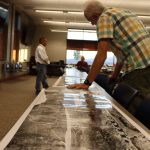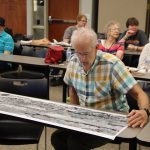Roman Vega, Director and Curator for the Helper Museum, was this month’s guest speaker for the Carbon County Historical Society. Vega has been the museum’s Director and Curator since 2020 and has worked diligently to bring things to life at the Helper Museum.
Vega brought in several panoramic photos of the Castle Gate Mine, located in Helper. Vega discussed that much of what the museum does wouldn’t be possible without the amazing volunteers and donors.
Vega introduced himself as a native of Helper, born and raised. Vega was a graduate of Carbon High School prior to his 21 years of military service, where he received several medals, including the Bronze Star.
Vega is also a graduate of the Senior Leader Course, Advanced Leader Course, Designated Senior Logistician by the International Society of Logistics and the United States Army Logistics University. Vega said he got his start at the Helper Museum when his mother, Isabel Vega, asked for his help with a few projects at the museum.
Vega stated he immediately got to work, giving the museum a huge makeover. Vega said they painted the entire museum, replaced flooring, put up new signage and coordinated fundraisers to help with funding. They have since opened up several other rooms as well as the basement.
“It was originally called the Western Mining and Railroad Museum, but we had just changed the name to The Helper Museum, because there’s so much more than just trains and railroad. There’s a lot of historical figures that actually came through Helper during that time,” stated Vega.
Vega made mention to “Mother Jones”, who during that time was a representative of the United Mine Workers of America (UMWA). Jones is said to have marched the streets of Helper in 1903, alongside the Italians, as the first group to go on strike due to the poor conditions that they were being subjected to, as well as wages and the housing.
In response, all Italians were banned from the mines and the mines recruited many Greeks to the area to be coal miners. Many of the immigrants were promised a better life away from poverty and war. Many were then indebted to the coal mine as they now owed a debt of service for being brought over. Many of the immigrants were required to purchase all of their mining tools from their designated mining store, to which they were not paid in dollars at the time. They were paid in a currency that could only be used at the company store called “script”.
“There’s the old song that goes “I owe my Soul to the Company Store”, that’s kind of where you get that,” stated Vega.
The Helper Museum was originally an old hotel, as were majority of the buildings on Main Street. As many people already know, there were quite a few single men during that time, which meant there were quite a few brothels as well. Helper’s Main Street was known for their three B’s: bars, brothels and bakeries.
Vega advised that the last running brothel in Helper was located at the Carbon Hotel and didn’t close down until 1977. Vega continued to provide a bit of history on the Castle Gate Mine explosion, which took the lives of 173 coal miners, causing many Helper women to be widows.
Attendees were then invited up to take a closer view at the many photographs that Vega had brought in and were also invited to come out the Helper Museum to learn more and to see the new and improved museum.

